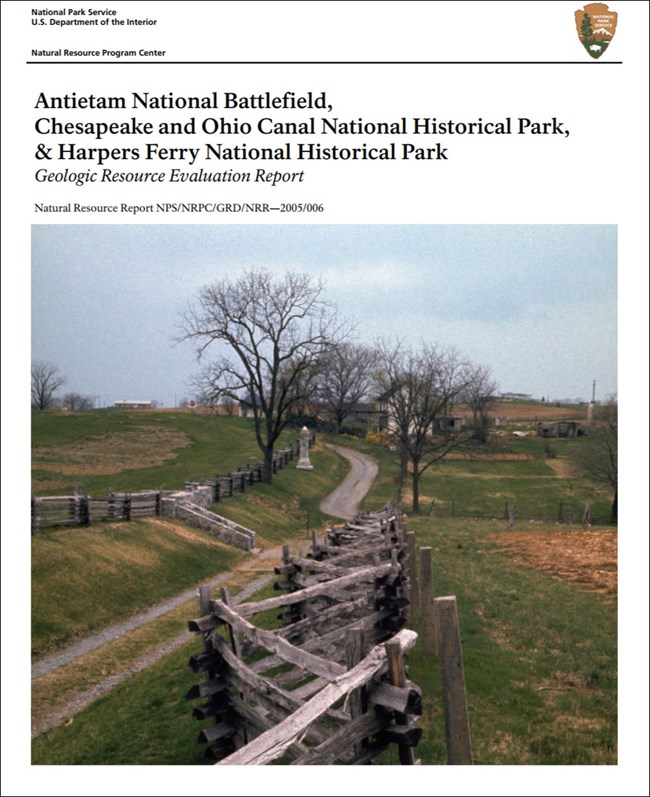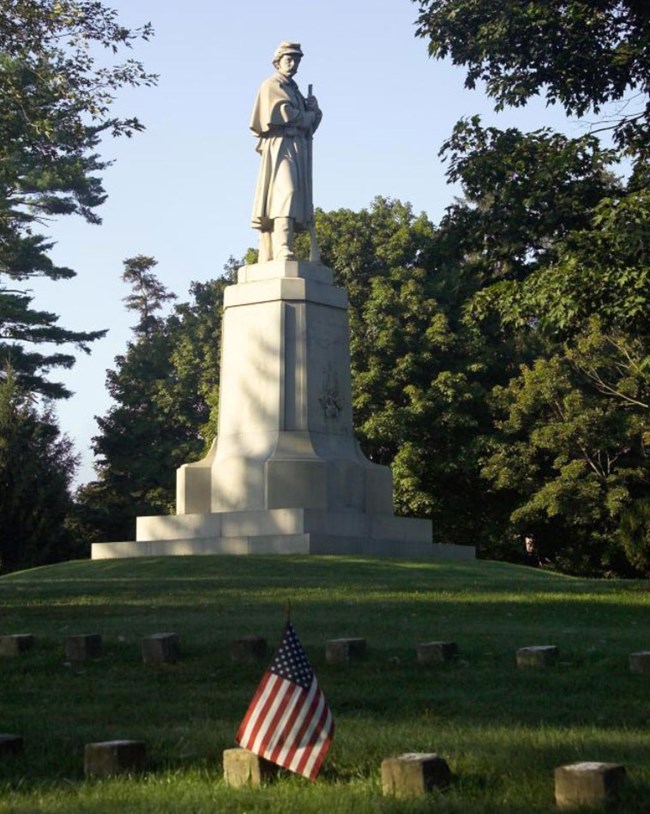Last updated: June 17, 2024
Article
NPS Geodiversity Atlas—Antietam National Battlefield, Maryland
Geodiversity refers to the full variety of natural geologic (rocks, minerals, sediments, fossils, landforms, and physical processes) and soil resources and processes that occur in the park. A product of the Geologic Resources Inventory, the NPS Geodiversity Atlas delivers information in support of education, Geoconservation, and integrated management of living (biotic) and non-living (abiotic) components of the ecosystem.

Introduction
Antietam National Battlefield (ANTI) is located just outside the town of Sharpsburg, Maryland, approximately 14 km (9 mi) north of Harpers Ferry in Washington County, Maryland. Established on August 30, 1890, ANTI encompasses about 1,307 hectares (3,230 acres) and commemorates the bloodiest single-day battle in American history. The Battle of Antietam in 1862 ended General Robert E. Lee’s first invasion of the North during the Civil War and resulted in more than 23,000 soldiers killed, wounded, or missing (National Park Service 2016a). Photographs taken at Antietam in the days following the battle are some of the first to publicly display the horrors associated with the American Civil War. The battle provided President Lincoln with the opportunity to issue the preliminary Emancipation Proclamation, emphasizing the Union’s intent to abolish slavery following the war. Considered one of the best-preserved Civil War areas in the NPS, the landscape of ANTI includes the battlefield site, monuments, roadways, fences, an observation tower, tablets documenting troop movements and artillery locations, as well as other associated features established by the War Department (National Park Service 2013a).
Geologic Setting
ANTI is situated within the Great Valley Section (=Shenandoah Valley of Virginia) of the Valley and Ridge physiographic province, a region characterized by long, parallel ridges separated by valleys that typically exhibit karst topography due to the underlying carbonate rocks (Southworth and Denenny 2006). The rural landscape of ANTI consists of rolling hills dotted with farmsteads, fields, and pastures that are reminiscent of the Civil War-era battle. The bedrock underlying ANTI is composed of carbonate and clastic sedimentary rocks that were deposited on the ancient continental margin of the supercontinent Laurentia (ancestral North America) during the Cambrian and Ordovician that were subsequently buried for about 200 million years and then folded and uplifted during the late Paleozoic Alleghenian Orogeny approximately285 million years ago (Southworth and Denenny 2006). Most of the park is underlain by the Cambrian Elbrook Limestone and Cambrian–Ordovician Conococheague Limestone (including the Big Spring Station Member). Sinkholes have developed throughout most of the carbonate formations in the ANTI region but are more heavily concentrated in the Elbrook and Conococheague Limestones (Thornberry-Ehrlich 2005). Underlying the eastern portion of ANTI are older, Cambrian-age units of the Waynesboro Formation (Red Run, Cavetown, and Chewsville Members) and Tomstown Formation (Dargan Member).
Paleontological Resources
All NPS fossil resources are protected under the Paleontological Resources Preservation Act of 2009 (Public Law 111-11, Title VI, Subtitle D; 16 U.S.C. §§ 470aaa - 470aaa-11).
Cave and Karst
All NPS cave resources are protected under the the Federal Cave Resources Protection Act of 1988 (FCRPA)(16 U.S.C. § 4301 et seq.).
Abandoned Mineral Lands
NPS AML sites can be important cultural resources and habitat, but many pose risks to park visitors and wildlife, and degrade water quality, park landscapes, and physical and biological resources. Be safe near AML sites—Stay Out and Stay Alive!
Regional Geology
Antietam National Battlefield is a part of the Valley and Ridge Physiographic Province and shares its geologic history and some characteristic geologic formations with a region that extends well beyond park boundaries.
- Scoping summaries are records of scoping meetings where NPS staff and local geologists determined the park’s geologic mapping plan and what content should be included in the report.
- Digital geologic maps include files for viewing in GIS software, a guide to using the data, and a document with ancillary map information. Newer products also include data viewable in Google Earth and online map services.
- Reports use the maps to discuss the park’s setting and significance, notable geologic features and processes, geologic resource management issues, and geologic history.
- Posters are a static view of the GIS data in PDF format. Newer posters include aerial imagery or shaded relief and other park information. They are also included with the reports.
- Projects list basic information about the program and all products available for a park.
Source: NPS DataStore Saved Search 2681. To search for additional information, visit the NPS DataStore.
A NPS Soil Resources Inventory project has been completed for Antietam National Battlefield and can be found on the NPS Data Store.
Source: NPS DataStore Saved Search 2695. To search for additional information, visit the NPS DataStore.

Related Links
